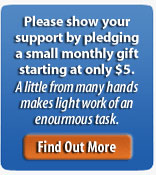How To Create A Pandemic Panic…And Keep It Going

This week, California, which has a death rate that is less than half the national average, is rolling back its reopening amid an increase in coronavirus cases. Elsewhere, we’re awash in stories about how states have reopened “too soon.” Why the continued panic when we know that the disease is far less lethal than originally feared?
If nothing else, the coronavirus pandemic is a textbook example of how to create fear and anxiety that is out of proportion to the threat, and spur panic-induced policies that needlessly kill people (like seniors in New York nursing homes). It also demonstrates how to keep the panic going, even as evidence piles up that the initial fears were wildly exaggerated.
Before anyone accuses us of being indifferent to COVID-19 deaths, or of being conspiracy mongers, we feel the need to point out that we aren’t saying that the coronavirus isn’t a serious public health threat. It obviously is. The question is whether the risk is being exaggerated and whether public policies enacted in the wake of it are necessary or effective.
Here are five steps that the got the coronavirus panic started and why it continues to this day.
1. Wildly exaggerate the deadliness of the disease. Most perceptions of the coronavirus were formed when the World Health Organization announced that the fatality rate was above 3%. If true, there would be millions of people dead. But it wasn’t even close to accurate. Based on ever greater amounts of data, we know that that the death rate is more like a bad flu season than the plague. Then there was the report from the Imperial College of London in March that claimed that even with draconian lockdowns in place, a million people in the U.S. would die from the coronavirus. That model has since been debunked, but the combination of the two extremely dire forecasts set the public’s perception of the disease and acceptance of draconian control measures.
2. Overcount deaths and undercount cases. These perceptions have continued because of the way cases and deaths are counted. On the one hand, the number of “confirmed” cases is a fraction of the actual number of people who’ve contracted the disease. That’s because many have symptoms that are minor or nonexistent, and so they never bother to get tested. In fact, one reason for the increase in “confirmed” cases is the fact that testing is more routine, even for those who are asymptomatic.
At the same time, the number of COVID-19 deaths is almost certainly exaggerated because we aren’t counting deaths caused by COVID-19, but, per CDC guidelines, deaths among people who have tested positive for COVID-19, or are presumed to have had the disease. There’s a big difference between the two.
Colorado started tracking both numbers, and today the number of people who’ve died in the state with COVID-19 is 1,725. But the number of deaths due to COVID-19 is 8% lower at 1,586. Yet the number reported by the CDC for Colorado is 1,725. Reports from other states have found similar or higher levels of bloat in the death counts. Apply Colorado’s ratio nationwide and it means the national death count is more than 11,000 too high.
3. Ignore positive trends. Amid all the agonizing over the rise in new coronavirus cases are data that should be reassuring, but are being largely ignored. For example, while the number of new cases has been skyrocketing, the number of deaths hasn’t. This isn’t just because there’s a lag between the two. Over the past four weeks, the number of daily new cases has climbed four-fold, but the number of deaths, while up, isn’t anywhere near the mid-April peak, which occurred one month after the first surge of daily cases began.
The chart below shows the total number of deaths compared with the total number of confirmed cases since May. Notice a trend?

Meanwhile, the CDC now says that the COVID-19 numbers no longer meet the threshold for an epidemic. How many news sites led with this news?
4. Act as though any new infection is a tragedy. The news media continue to treat outbreaks of COVID-19 as a death sentence. It’s news when a prominent person tests positive, but not when they get better. Nor has the press done a good job of explaining the relative risk of the disease to different demographic groups. Instead, we keep hearing things like “COVID-19 doesn’t discriminate” when the data clearly show that it does. Targeting public health money and efforts at vulnerable populations makes sense. Universal lockdowns don’t.
5. Ignore the health consequences of lockdowns. We’ve argued in this space for months that the cure for coronavirus may very well end up being worse than the disease. That is, the panic induced by those early false reports about its lethality, and the resulting lockdowns, could end up causing more deaths than are saved by the lockdowns. Prudent measures like social distancing and mask requirements might have been all that was needed all along. For example, the CDC says that closing schools poses a great risk to children’s health than reopening them. Yet some school districts in California, for example, have already announced that schools won’t reopen this fall.
Underlying all this is the presumption — imposed by the public health community — that you can never be too careful. By this standard, there’s nothing wrong with grossly overplaying the threat of a disease. But reporting good news, or providing accurate data about risks is a public disservice because it might cause people to be “too” lax.
If we’re going to learn anything from this experience, the first lesson ought to be how to avoid a panic the next time a pandemic comes around. Because once a panic is induced, it’s hard to stop.

















